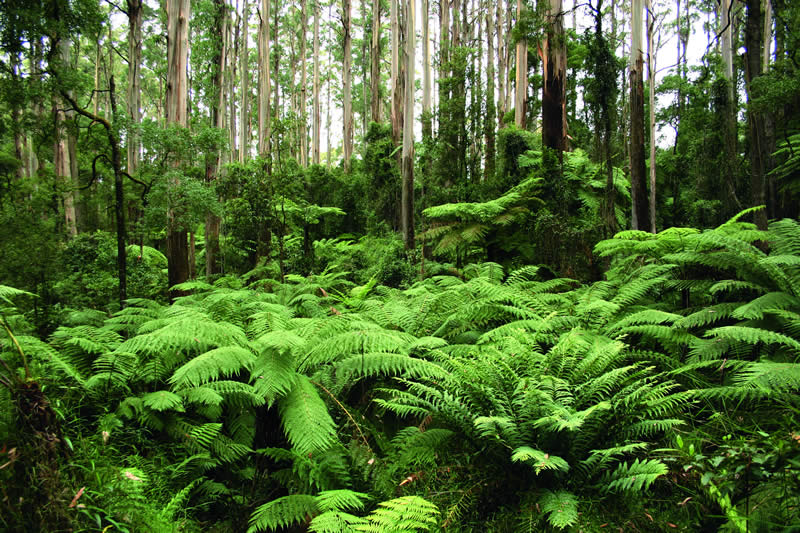Timothy McBride, Manager Biodiversity Conservation & Research, VicForests
I’ve been working in the timber industry in similar roles to my current position since 1994. In that time, I’ve seen the industry complete its development from an often-adversarial position with regards to environmental conservation, to one in which conservation is an integral part of our work.
I began my career in the Pacific Northwest US. The country had been through a period of huge change in the decades before I graduated. There had been big environmental battles in the 1970s over endangered species that led to the development of the Endangered Species Act. The ’80s and ’90s saw heated battles between the timber industry and environmentalists. A new awareness had created some pretty rigid environmental laws at the federal and state levels and landowners and the timber industry had to comply with those rules. That’s where the fighting started, because the industry didn’t want to, and environmentalists might have interpreted the rules more tightly than they were meant by the lawmakers.
Ultimately, the battles started costing more money than the timber was worth to harvest, and that’s when everyone realised there could be a better outcome. There was a lot of conflict in those days, but I think people got tired of fighting all the time. You can’t really win anything lasting in courts, you can’t establish a process, you can only establish an outcome. So some smart people in the industry decided to start working with stakeholders including environmentalists, and found a much better path forward than spending money on lawyers.
Since then, the industry has learned that stakeholders and an environmental mindset are core parts of the business. Here in Victoria, there are a handful of endangered species that are still creating battles and so we have to figure out how to achieve an outcome that’s balanced on both sides. The industry needs to support economic development and maintain the thousands of jobs that rely on it, and we also need to support and conserve our biodiversity in the landscape so future generations can partake of the joys and pleasures it’s brought to us. How do we do that? We stop fighting and we come together to work on plans.
Conservation plans that are well thought out involve multiple aspects: the social, the economic and the environmental. They mean a lot more meetings than doing things the old way. There are a lot more people to check in with. We have a lot more face-to-face conversations before we harvest.
In Victoria, only 6 per cent of the state’s forests are available and suitable for timber harvesting and some of these are near urban areas. These days our foresters go out and knock on doors and talk to the homeowners that are surrounding our operation and actually have a conversation. That’s really what’s changed, that open communication.
Our process is multi-layered and thorough. Researchers focus on any of our three core areas: the environmental, the economic and the social values. We partner with academics from universities to conduct targeted scientific research. If there’s an animal we don’t know a lot about, we’ll do ecological research projects. There’s operational research looking at the value of the timber from multiple perspectives, and then there’s also social research, even down to how our operations will change the views people see from their homes and in recreation areas.
It all starts with field research where our people are walking out in the planned operational area and getting a feel for what values are there. Their basic understanding of what animals – what I’d call critters – are there, what habitat is unique to the site, and how people use and interact with it, is then translated into a formal plan, and where necessary, those plans are developed with further stakeholder input. When questions arise as to the impacts of forest management on these planned areas, research is conducted and the outcomes are fed back into the plan. Finally, we implement that plan and monitor how it is meeting the objectives and the goals.
You can physically see the difference in forestry now. We know there are certain things that come out of forests that are basic to human survival, among them clean water, clean air and a sense of connection to nature. In order to provide clean water, we know through decades of research that you have to keep dirt from getting into the streams and the best way to do that is to provide standing timber on both sides of the stream so it can filter the erosion. These days we do that as a default — buffer streams and lakes.
If you look across the managed forest landscape on average there’s probably 30 per cent of an area that will be buffered. When it comes to animals, we have focused research that tells us in order to maintain a certain population of a certain critter on the landscape, we’ve got to provide a certain type of habitat, so that’s also factored into the plan and implementation.
Advances in technology have made our lives much easier. High-elevation aerial photos, LiDAR and radar are helping us understand different trees on the landscape. We’re using drones to collect information, and passive recorders, both acoustic monitors and motion-sensing cameras. Even phone apps that help gather data on the spot. This has all increased our ability to collect data quickly and efficiently, and get better accuracy about what’s in the forest and how we can pull that information into a plan.
It’s going to get even better. Drone technology is in its infancy and the other big advances are in sophisticated landscape computer modelling. This will be hugely beneficial to us, along with improvements in analysing data, and using those statistics, which are already giving us better results from the data than what we had 20 years ago.
I love working alongside such passionate people who care so much about forests that they have chosen to spend their lives specialising in forestry. I look forward to the future of forestry as it continues to evolve.









